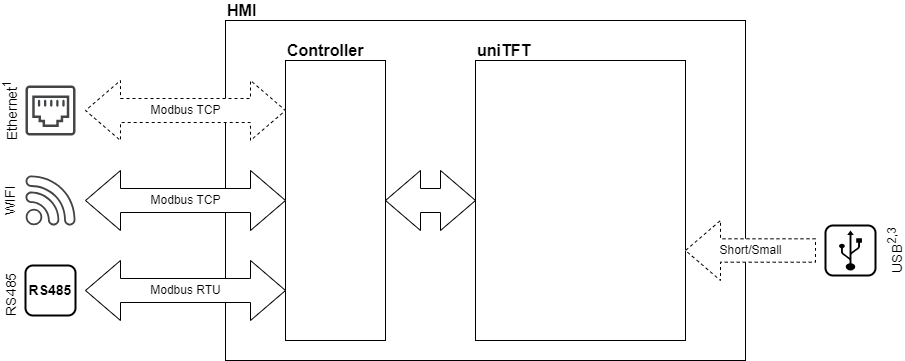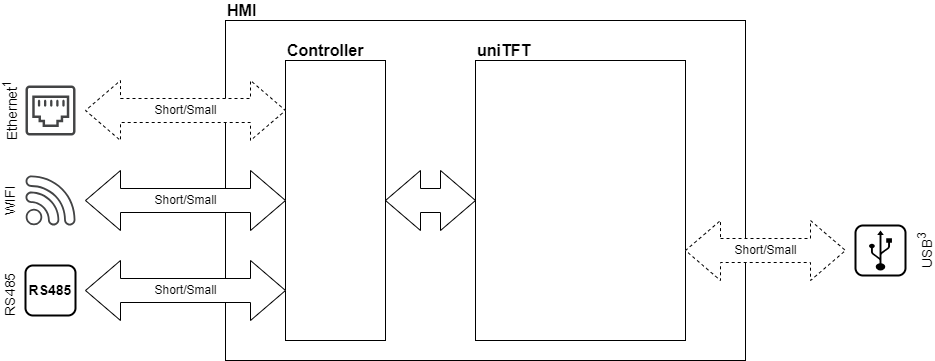Data transfer
Communication with EA HMI-Series can be done through various hardware interfaces such as RS485, WiFi, LAN and many more. For more details on hardware, baud rate etc. please refer to EA HMI-Series datasheet.
The EA HMI-Series provides different protocols for easy connection to the host system. As standard the proprietary protocol of the EA uniTFT(s)-series is build-in. But various other protocols are available, for example Modbus.
Modbus
If a module is chosen that provides Modbus protocol: The module supports Modbus communication in the networks based on RS485, WiFi, and Ethernet interfaces. Modbus is a data communications protocol originally published by Modicon (now Schneider Electric) in 1979 for use with its programmable logic controllers (PLCs).
At the moment Modbus RTU is supported.
With the help of the HMIDesigner data mapping is done. The EA HMI-Series acts as Modbus slave only. Detailed explanation about Modbus can be found in this chapter

Proprietary uniTFT Short/Small protocol
Communication with EA uniTFT-Series is done via serial interface. For data transfer there's a software protocol built-in which enables a safe data transmission.
1. with LAN version only (e.g. EA HMI070-16LU)
2. USB interface for project or firmware update
3. only for 7´´ version

